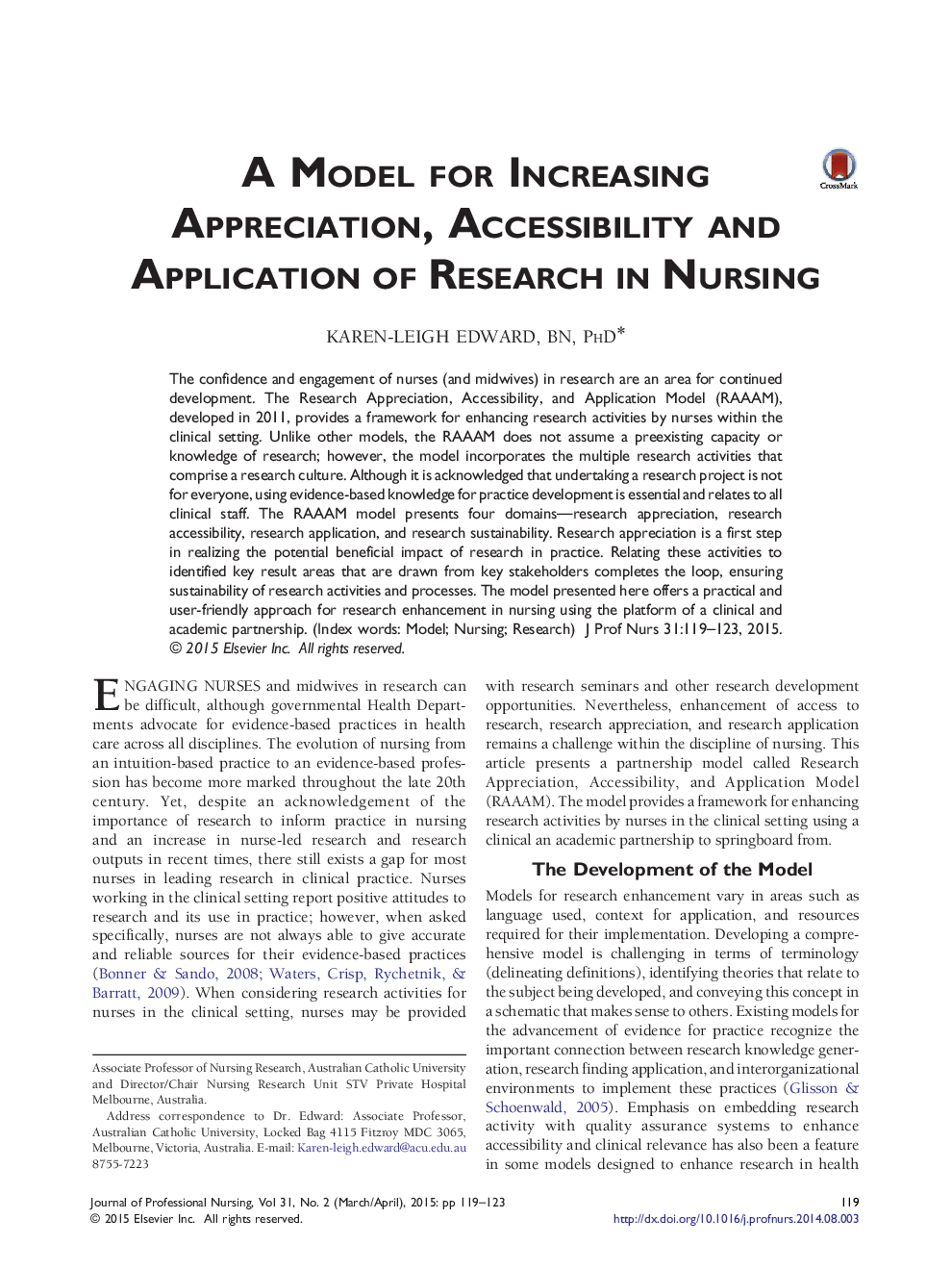| کد مقاله | کد نشریه | سال انتشار | مقاله انگلیسی | نسخه تمام متن |
|---|---|---|---|---|
| 2670837 | 1141313 | 2015 | 5 صفحه PDF | دانلود رایگان |
• The Research, Appreciation, Accessibility and Application Model (RAAAM) provides a framework for enhancing research by nurses in the clinical setting
• The RAAAM does not assume preexisting research capacity
• Using the platform of a hospital and academic partnership to provide research leadership can help to share the costs of implementing the RAAAM in practice
The confidence and engagement of nurses (and midwives) in research are an area for continued development. The Research Appreciation, Accessibility, and Application Model (RAAAM), developed in 2011, provides a framework for enhancing research activities by nurses within the clinical setting. Unlike other models, the RAAAM does not assume a preexisting capacity or knowledge of research; however, the model incorporates the multiple research activities that comprise a research culture. Although it is acknowledged that undertaking a research project is not for everyone, using evidence-based knowledge for practice development is essential and relates to all clinical staff. The RAAAM model presents four domains—research appreciation, research accessibility, research application, and research sustainability. Research appreciation is a first step in realizing the potential beneficial impact of research in practice. Relating these activities to identified key result areas that are drawn from key stakeholders completes the loop, ensuring sustainability of research activities and processes. The model presented here offers a practical and user-friendly approach for research enhancement in nursing using the platform of a clinical and academic partnership.
Journal: Journal of Professional Nursing - Volume 31, Issue 2, March–April 2015, Pages 119–123
